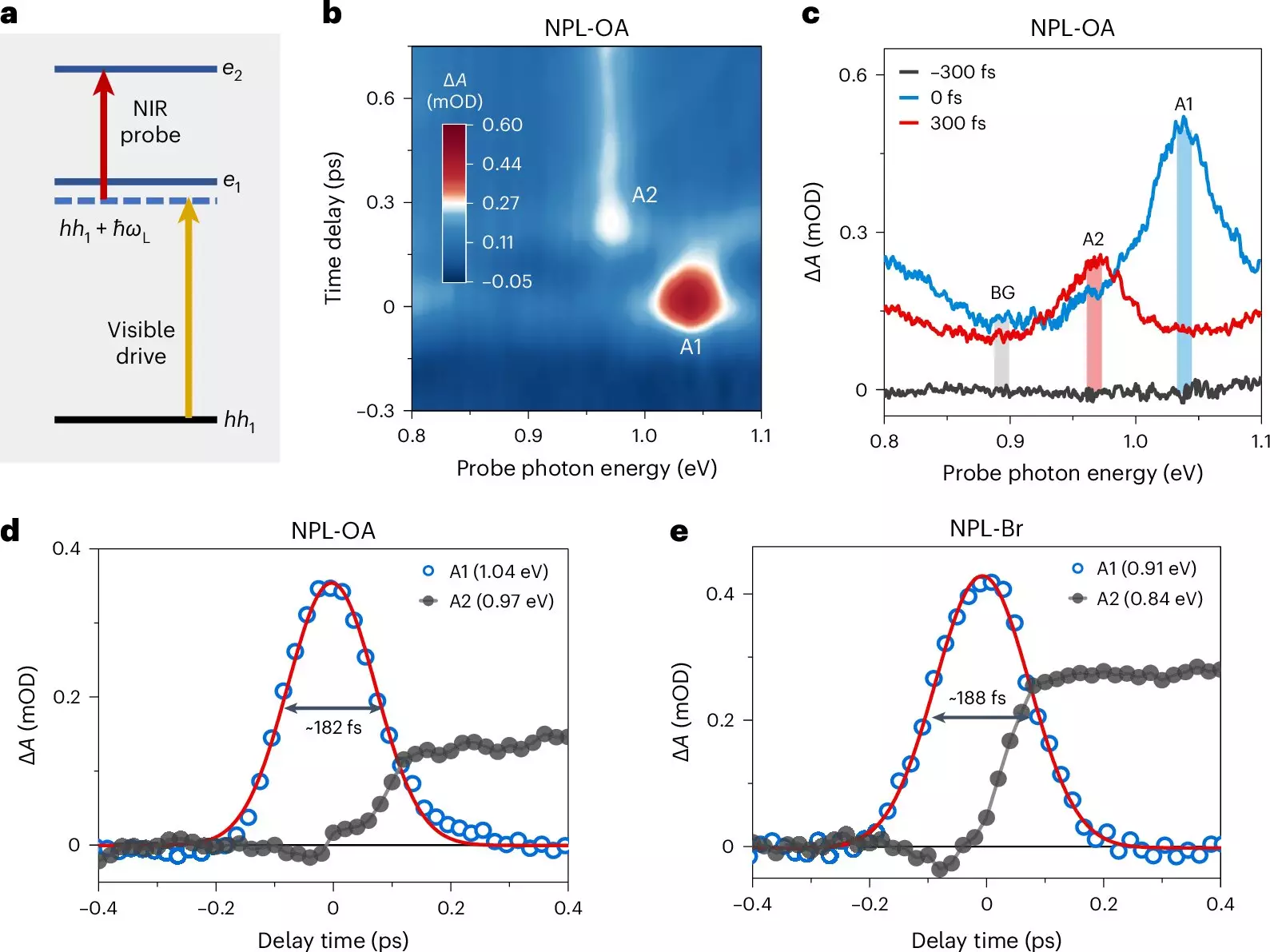Quantum dots (QDs) represent a significant advancement in the realm of nanotechnology, specifically in the field of optoelectronics. These semiconductor nanocrystals are defined by their size-dependent optical properties, which stem from quantum mechanical effects. The ability to manipulate light at such miniature scales is not merely a theoretical concept but a practical reality that researchers continue to explore vigorously. This dynamic has been particularly evident in recent studies, which focus on unlocking the potential of these nanostructures to reveal novel quantum phenomena, including Floquet states.
The concept of Floquet states pertains to a fascinating intersection of light and matter, where the influence of electromagnetic fields can lead to groundbreaking insights into the behavior of quantum systems. Traditionally, the observation of these states remained shrouded in complexity, often requiring highly controlled environments—typically low temperatures and high vacuum—to prevent any disturbances. In this context, the use of specialized spectroscopic techniques, such as time- and angle-resolved photoemission spectroscopy, has been integral to piecing together the intricate puzzle of quantum interactions.
Recent empirical challenges highlighted the limitations inherent in previous methodologies, emphasizing the need for innovative approaches to study these quantum states. The breakthrough reported by researchers led by Prof. Wu Kaifeng aimed to overcome these hurdles by creating conditions conducive to the observation of Floquet states in a more accessible environment—one that operates under ambient conditions without the need for elaborate setups.
The Role of Colloidal Nanocrystals
Prof. Wu and his team utilized colloidal nanoplatelets, a kind of quantum dot that has seen significant advancements over the last decade. These nanoplatelets are characterized by their exceptional quantum confinement effects, particularly in the thickness dimension, which leads to unique electronic transitions that can occur in the visible and near-infrared spectrum. This selection of colloidal nanostructures was pivotal, enabling the researchers to manifest observable Floquet states without the often-unattainable conditions seen in prior studies.
The research revealed that sub-bandgap visible photons interact with heavy-hole states, facilitating a transition toward Floquet states akin to first quantized electron states. This relationship forms a sort of three-level system, where energetic transitions can be meticulously controlled and observed. In essence, the study provides a bridge linking theoretical models of quantum mechanics with practical observations, illuminating the vibrant dynamics of these quantum states.
In a groundbreaking achievement, the research successfully demonstrated the direct observation of Floquet states using an all-optical spectroscopic approach. This methodology diverged from conventional practices, which often relied on complex infrared or terahertz pulses. Instead, the innovative use of visible to near-infrared light enabled the researchers to reveal the spectral and dynamic attributes of the Floquet states prominently.
One notable finding of the study was the observation of rapid dephasing of the Floquet states into a real population of electronic states. Contrary to previous assumptions that these states dissipated quickly outside the overlap of pump and probe pulses, the researchers demonstrated that they persisted for hundreds of femtoseconds—profoundly altering the understanding of the temporal evolution of such states. This fresh insight could pave the way for developing new techniques for controlling interactions at the quantum level.
The implications of these findings are vast and multifaceted. Prof. Wu emphasized that this research not only showcases the feasibility of observing Floquet states in a novel and accessible manner but also unveils a spectrum of potential applications. The ability to manipulate the quantum and topological properties of solid-state materials could lead to significant advancements in technologies ranging from photonics to quantum computing.
Moreover, the transferability of these techniques to other materials could catalyze significant breakthroughs in the understanding of light-matter interactions. By extending this investigation into surface and interfacial chemical reactions using non-resonant light fields, the landscape of how we conceive chemical dynamics could shift dramatically.
The exploration of Floquet states in colloidal quantum dots marks a pivotal moment in quantum dot research. As the scientific community continues to grapple with the nuances of quantum mechanics, this study serves as a beacon, illuminating potential pathways toward novel applications and an enhanced understanding of the material world. Through persistent ingenuity and exploration, researchers can harness the power of these quantum phenomena to propel the next generation of technological innovations.

